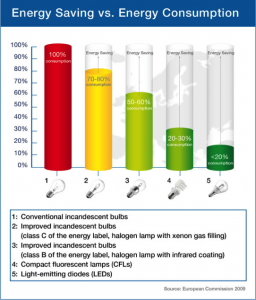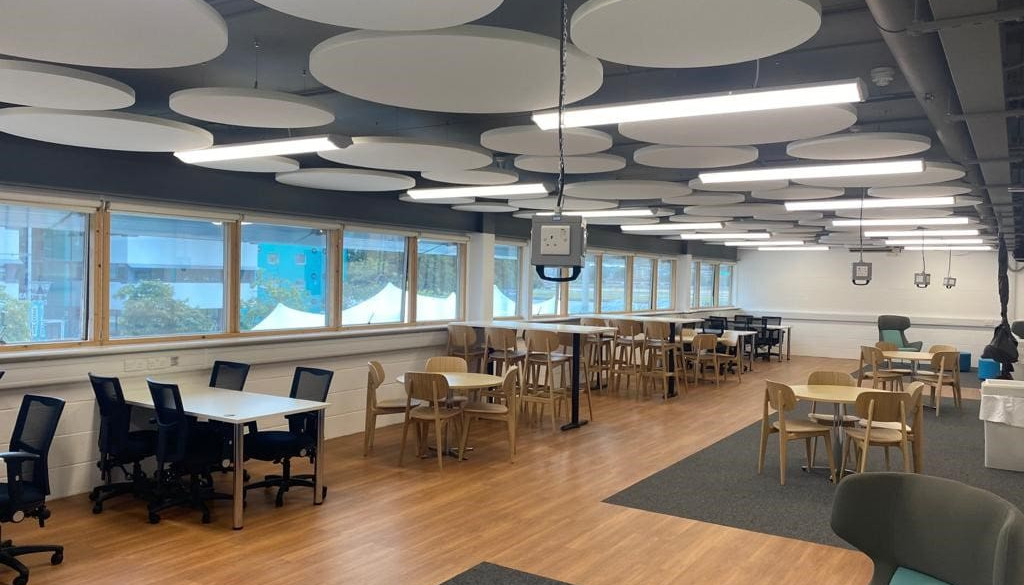5 Environmental Benefits of Switching to LED Lighting
We live in an ever-changing society. However, one thing that continues to be an unfortunate and unfortunate result of a developing world is that we are damaging our environment. The lighting we use plays a significant role in our carbon footprint. Thankfully, innovation in lighting to LED lamps mean that we can all do something to help ourselves and help the environment at the same time. We have a responsibility to do what we can to minimise as much as we can. Read on to learn the benefits of switching to LED lighting in place of traditional lamps.
In 2017, 19% of the UK’s carbon emissions came from buildings, with residential properties  accounting for 77% of these emissions, commercial buildings 14% and public buildings 10%. While emissions have fallen by 43% compared to levels in 1990, as a nation we are still a long way from achieving the government’s recently announced target of reducing carbon emissions to zero by 2050.
accounting for 77% of these emissions, commercial buildings 14% and public buildings 10%. While emissions have fallen by 43% compared to levels in 1990, as a nation we are still a long way from achieving the government’s recently announced target of reducing carbon emissions to zero by 2050.
The Minimum Energy Efficiency Regulations 2018 (MEES) prohibit the grant of any new leases of buildings with an energy efficiency rating as shown on an EPC of below an E (see more here). One way to address the carbon emissions in the workplace is to switch out incandescent or standard lamps and replace them with LEDs (light-emitting diodes) or CFLs (compact fluorescent lamps). CFLs may be better for the environment in some ways; however, they do contain small amounts of mercury which makes them difficult to dispose of. So, switching out those old lamps for LED (Light Emitting Diode) lighting in your home or workplace is a simple yet most energy-efficient and environmentally friendly change that you can make in your home or office to reduce your carbon footprint.
Let us talk about the five key benefits to the environment (and yourselves) by simply changing the lamps in your life.
1) Longer Lasting – save you money
LED lamps can last up to 20 times longer than standard forms of lighting. This not only benefits the environment, but will also save money on your energy bills. Some LED lamps can last for years or even decades. Imagine the long-term benefits to the environment if everyone made this small change, for instance, reduced landfill waste, less production of new lamps, including transportation and packaging – three important factors when considering environmental issues.
2) Brighter Lighting Means Fewer Lights Used
You can no longer measure brightness by the wattage of the bulb because LED lights also draw much less power than traditional lighting. For example, a typical 84-watt fluorescent light can be replaced by a 36 watt LED to provide the same level of light. To put this into perspective, the newer superbright LED lights available today produce about 100 lumens per watt of power input. Old halogen spotlights and filament bulbs produce about 12 lumens per watt of input power, nearly 10 times brighter! This means that you can create the same level of lighting using fewer lights and less electricity, which will in turn reduce the demand from power plants and decrease greenhouse gas emissions.
3) Non-Toxic Elements – Reducing Your Carbon Footprint
It is concerning that for so many years we have been disposing of fluorescent lights containing toxic mercury on our landfill sites. LED Lights contain no toxic elements, so they can be included in your normal domestic waste. Fluorescent lighting has special disposal regulations and some council recycling sites do not accept them.
4) Cost-effective – spend less money
LED lighting was initially quite expensive, costing around £9 for a single lamp. Over time prices have reduced and you can now purchase multi-packs from around £1 a lamp. For a small investment any building or household can save money by upgrading to energy-saving LED lights. Although the initial cost may be higher than conventional lamps, you will save money in the long term by a noticeable reduction in your electricity bills.
5) Less Wastage – eco-friendly
Standard LED lamps can be up to 80% more energy-efficient than other lights and waste far less energy. Fluorescent lights for example, convert around 95% of the energy they produce into heat and only 5% into light. In comparison LED lights convert 95% of their energy into light with only 5% being wasted as heat – another positive effect on our environment by using less energy. In marketing terms, the USP (unique selling point) of
1) Longer Lasting – save you money
LED lamps can last up to 20 times longer than standard forms of lighting. This not only benefits the environment, but will also save money on your energy bills. Some LED lamps can last for years or even decades. Imagine the long-term benefits to the environment if everyone made this small change, for instance, reduced landfill waste, less production of new lamps, including transportation and packaging – three important factors when considering environmental issues.
2) Brighter Lighting Means Fewer Lights Used
You can no longer measure brightness by the wattage of the bulb because LED lights also draw much less power than traditional lighting. For example, a typical 84-watt fluorescent light can be replaced by a 36 watt LED to provide the same level of light. To put this into perspective, the newer superbright LED lights available today produce about 100 lumens per watt of power input. Old halogen spotlights and filament bulbs produce about 12 lumens per watt of input power, nearly 10 times brighter! This means that you can create the same level of lighting using fewer lights and less electricity, which will in turn reduce the demand from power plants and decrease greenhouse gas emissions.
3) Non-Toxic Elements – Reducing Your Carbon Footprint
It is concerning that for so many years we have been disposing of fluorescent lights containing toxic mercury on our landfill sites. LED Lights contain no toxic elements, so they can be included in your normal domestic waste. Fluorescent lighting has special disposal regulations and some council recycling sites do not accept them.
4) Cost-effective – spend less money
LED lighting was initially quite expensive, costing around £9 for a single lamp. Over time prices have reduced and you can now purchase multi-packs from around £1 a lamp. For a small investment any building or household can save money by upgrading to energy-saving LED lights. Although the initial cost may be higher than conventional lamps, you will save money in the long term by a noticeable reduction in your electricity bills.
5) Less Wastage – eco-friendly
Standard LED lamps can be up to 80% more energy-efficient than other lights and waste far less energy. Fluorescent lights for example, convert around 95% of the energy they produce into heat and only 5% into light. In comparison LED lights convert 95% of their energy into light with only 5% being wasted as heat – another positive effect on our environment by using less energy. In marketing terms, the USP (unique selling point) of LED lights is that they use less energy, saving money and is environmentally friendly – win win!
If you think it’s time for a change, Watkinscole offers free energy audits to identify areas where you can be more energy efficient, save money, and is a simple way to help our planet.
You can reach us on 020 8669 2438 or info@drddev1.co.uk

